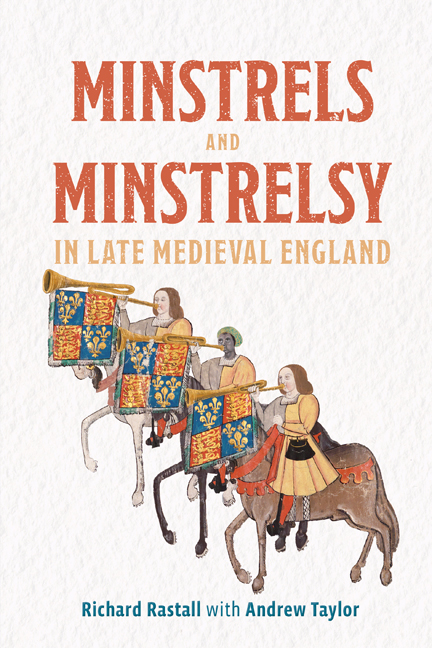Book contents
- Frontmatter
- Dedication
- Contents
- List of illustrations
- List of music examples
- List of abbreviations
- A note on references
- A note on money
- A note on dates
- Preface
- Acknowledgments
- Part I Minstrels and Minstrelsy in the Elite Households
- Part II Urban Minstrelsy
- Part III On the Road
- Part IV Minstrel Performance
- Envoi
- Bibliography
- Index
Part IV - Minstrel Performance
Published online by Cambridge University Press: 09 January 2024
- Frontmatter
- Dedication
- Contents
- List of illustrations
- List of music examples
- List of abbreviations
- A note on references
- A note on money
- A note on dates
- Preface
- Acknowledgments
- Part I Minstrels and Minstrelsy in the Elite Households
- Part II Urban Minstrelsy
- Part III On the Road
- Part IV Minstrel Performance
- Envoi
- Bibliography
- Index
Summary
Introduction to Part IV
Consideration of minstrel performance is the ultimate goal of the study of minstrelsy: for the exploration of the circumstances of their lives and work concerns social history, whereas the more desirable end-product is the recovery of the minstrels’ artistic achievement. For both vocal and instrumental minstrelsy the main evidence of this would seem to be the written literary and musical remains of the minstrels’ repertory. The problem is to identify the precise relationship between the surviving written material – which apparently contains elements typical of the minstrels’ performances – and the entertainment that the minstrels actually performed, as suggested by the relevant iconography, the very rare eye-witness statements and items of domestic documentation. Andrew Taylor and I have approached this problem independently, via the evidence concerned with our own disciplines. Firm conclusions seem impossible, but the directions in which this approach has led us are similar. The crux of the problem, in both cases, is the relationship between creation, performance and written text. One can guess at creative processes in the notated dance-music that may be echoed in the written gestes and romances: but only in the case of music do we have theoretical works that describe how a singer should improvise a new piece over existing material (in this case, a tune). We cannot be sure that all of these techniques were used by instrumentalists, although there is evidence that the simpler ones were. We here assess the possibilities in our own disciplines: the resulting conclusions are simply statements of our current understanding, which are not at odds with one another.
In these chapters the evidence is presented and assessed mainly in the course of the relevant chapters, rather than in this introduction: for, apart from the primary evidence of the written remains, the different types of evidence illuminate different aspects of the problem. Study of the literary remains relies heavily on close analysis and explication of the texts; knowledge of the musical instruments comes mainly from iconographic sources; understanding the nature of concerted instrumental music depends on iconographic and documentary sources. For some of this evidence, however, a general introduction is needed here.
- Type
- Chapter
- Information
- Minstrels and Minstrelsy in Late Medieval England , pp. 227 - 234Publisher: Boydell & BrewerPrint publication year: 2023

